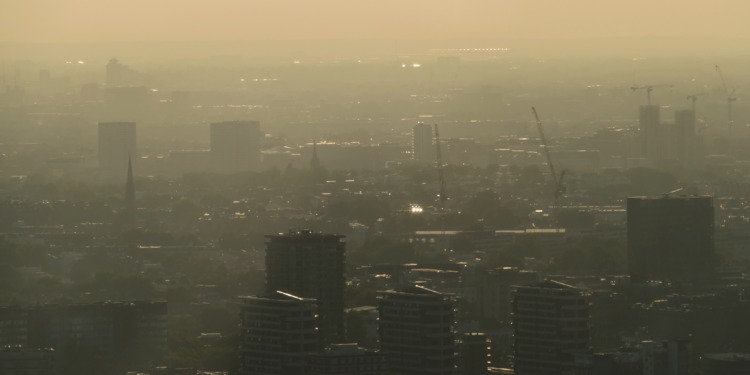A recent report by the European Environment Agency (EEA) has revealed that air pollution is responsible for more than 1,200 deaths of children and teenagers annually across the European Union (EU).
“Every year in EEA member and collaborating countries, air pollution is estimated to cause over 1,200 deaths and the loss of over 110,000 disability-adjusted life years,” stated the EEA.
The report studied the EEA’s 32 member countries, including the 27 EU states, and cooperating countries, such as Albania, Serbia, and Montenegro. The report did not include some industrially heavy countries bordering the EU, such as the UK, Ukraine and Russia, which could have bought the death toll even higher.
The death toll calculated is limited to children under the age of 18. Though this number may seem less significant compared to the worldwide annual death toll of 287,000, the impact of these early deaths and the chronic diseases caused is considered more profound.
The EEA reported the following last week:
“Exposure to fine particulate matter and nitrogen dioxide levels above the World Health Organization recommendations cause an estimated 238,000 and 49,000 premature deaths, respectively, in 2020.”
With this latest report drawing attention to the comparison between the total and child death tolls as a result of exposure to air pollution:
“Although the number of premature deaths in this age group is low relative to the total for the European population estimated by the EEA each year, deaths early in life represent a loss of future potential and come with a significant burden of chronic illness, both in childhood and later in life.”
The report outlines how air pollution is more consequential for children, as their immune system and their bodies are still developing, rendering them more vulnerable to it than adults. It also highlights how air pollution can play a significant role before children’s lives even begin, as it can cause “low birth weight, asthma, reduced lung function, respiratory infections and allergies in children and adolescents.”
Exposure to ozone and nitrogen dioxide (NO2) in the short term and to fine particles (PM2.5) – particles with a diameter smaller than 2.5 microns – in the long term impairs children’s lung function and lung development, states the EEA.
Exposure to polluted air can also aggravate chronic illenesses such as asthma, which afflicts over 9% of children in the EU, amongst other respiratory and cardiovascular diseases.
Related Articles: ‘The Big One’: Extinction Rebellion Lead Massive Climate Protest in London | Shift to Renewable Energy Must Protect Nature, Says Clean Energy Coalition | EU Fit for 55: Parliament Approves Crucial Parts of the Climate Package
According to the report, over 90% of Europe’s urban population has been exposed to levels of pollution above the 2021 WHO air quality guidelines, and 97% were exposed to the most harmful pollutant in the air, PM 2.5. Fine particulate matter is the primary instigator of the leading causes of premature deaths, heart disease and strokes, followed by lung diseases and lung cancer, as articulated by the report.
The report reveals that air pollution in Europe is mainly caused by traffic, heating and industry. It states that even though emissions have declined, air pollution levels are still not safe, particularly in Central and eastern Europe and Italy where the burning of solid fuels like coal in homes and industry has led to high levels of PM 2.5.
Data from the report shows that “key air pollutants” in all European countries have remained “stubbornly above” the World Health Organization’s recommended guidelines. The Mediterranean region and Central Europe have recorded the highest levels of PM 2.5, while Faro in Portugal and Umeå and Uppsala in Sweden have the lowest levels of PM 2.5 in Europe.
To address the issue of air pollution, in 2021, the EU launched the Zero Pollution Action Plan, which aims to limit emissions and reduce air pollution across the bloc.
Their targets include “improving air quality to reduce the number of premature deaths caused by air pollution by 55%” compared to 2005 levels by 2030.
Until these goals are reached, it is crucial to improve air quality in the vicinity of schools and kindergartens to safeguard the health of children and adolescents. Increasing green spaces, improving cycling infrastructure, lowering speed limits and imposing traffic bans when children are outside are some possibilities.
The EEA recommends introducing air quality policies that would take into account children and adolescents’ biology and exposure pathways to protect them.
It is important to remember that air pollution is not something children can protect themselves against. Instead, as the EEA Executive Director emphasises, it is adults’ responsibility to “vote for or influence relevant policies” to protect the future generation.
Editor’s Note: The opinions expressed here by the authors are their own, not those of Impakter.com — In the Featured Photo: Smog over a city Featured Photo Credit: Frédérick Tubiermont










